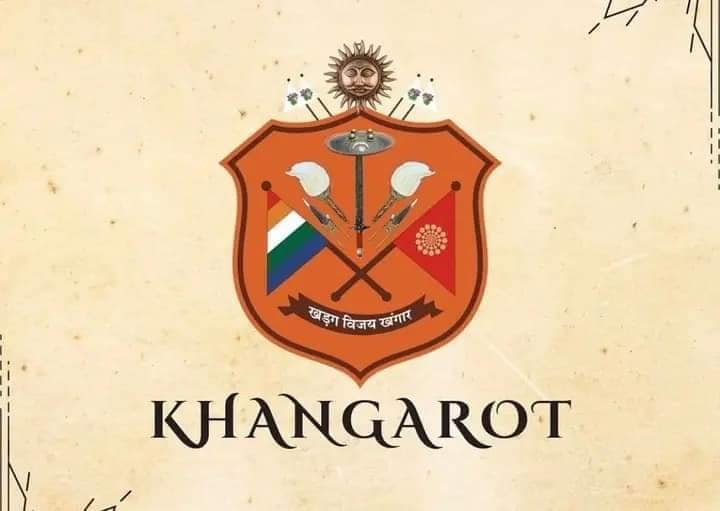The Khangarot Dynasty: A Legacy of Heritage in Rajasthan

Introduction:
The Khangarot Dynasty represents bravery, cultural richness, and political importance in Rajasthan. This Rajput clan significantly shaped the region with their military skills and governance. Over the centuries, the Khangarots earned a reputation for their valor and architectural contributions. In this article, we explore the dynasty’s origins, rise, cultural legacy, and modern-day influence.
Origins of the Khangarot Dynasty:
The Khangarot Dynasty’s roots trace back to the Rajput clans of Rajputana. This dynasty emerged during the medieval period and gained strength through strategic alliances and military conquests. The Khangarots first rose to prominence by establishing strongholds in northern Rajasthan, including areas like Merta and Sojat.
These regions offered natural defenses, which helped the Khangarots resist invasions and maintain independence. The rulers built alliances with other Rajput clans and even forged relations with the Mughals. Their resilience in battle and astute diplomacy helped them grow their influence.
Rise to Power:
The Khangarots established their power through strategic military campaigns and alliances. By the 15th century, the dynasty’s rulers had secured territories such as Merta, Sojat, and Nagaur. These regions became strongholds for their growing influence.
Their governance style focused on local traditions, gaining widespread support from the local population. The Khangarots encouraged agriculture, trade, and local craftsmanship, boosting the economy and prosperity of their territories.
Contributions to Architecture and Culture:
The Khangarot Fort rulers greatly influenced Rajasthan’s architectural and cultural heritage. Their contributions are visible in several forts, palaces, and religious structures that still stand today.
- Forts and Palaces:
The Khangarots built magnificent forts and palaces, which served both as defensive structures and symbols of power. Key examples include:
- Khangarot Fort in Merta: This fort stands as a symbol of the dynasty’s military strength. Its strategic location helped the Khangarots defend against invasions.
- Sojat Fort: Blending Rajput and Mughal architectural styles, the fort reflects the dynasty’s cultural openness.
- Temples and Religious Structures:
The Khangarot Dynasty also focused on religious development. They constructed temples dedicated to Hindu deities, many of which still attract pilgrims. The carvings and artwork within these temples highlight the dynasty’s artistic prowess.
- Art and Culture:
In addition to religious structures, the Khangarots supported local crafts. Their forts, palaces, and havelis feature detailed frescoes and murals depicting scenes from Hindu mythology and daily life. These works of art remain a vital part of Rajasthan’s cultural heritage.
Military Valor and Alliances:
The Khangarot rulers built a reputation for military strength. They defended Rajasthan from invaders, fought against Mughal forces, and repelled Afghan incursions. The dynasty’s armies were skilled in cavalry, archery, and infantry tactics.
In addition to fighting, the Khangarots forged alliances with other Rajput clans, including the Marathas and Mewar Dynasty. These alliances proved crucial in maintaining Rajasthan’s independence.
While they served in the Mughal army, the Khangarot rulers always maintained their autonomy. Their strategic position allowed them to negotiate favorable terms with imperial forces.
Legacy in the Modern Era:
After India’s independence in 1947, the Khangarot rulers lost their princely titles. However, their impact on Rajasthan’s political and cultural landscape endures. Today, the descendants of the Khangarots still hold influence in local politics. Their forts and palaces attract tourists, preserving the dynasty’s legacy.
The Khangarot Dynasty’s contributions to architecture, art, and governance continue to shape Rajasthan’s identity. Their cultural influence persists in the region’s landmarks and traditions.
Conclusion:
The Khangarot Dynasty remains an essential part of Rajasthan’s history. Known for their valor, governance, and cultural contributions, the Khangarots shaped the political and cultural fabric of the region. From military achievements to breathtaking architecture, their legacy continues to inspire awe.
Today, the Khangarot family’s forts, temples, and artworks continue to tell the story of their greatness. Their enduring influence ensures that the Khangarot Dynasty will remain a vital chapter in Rajasthan’s illustrious past.







